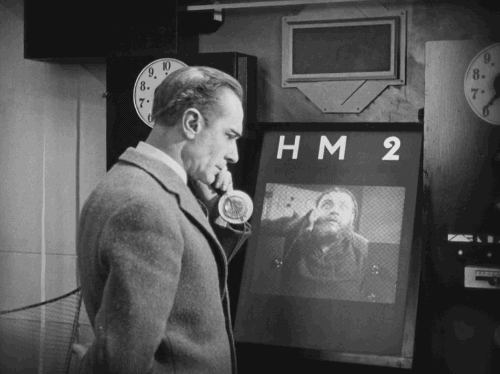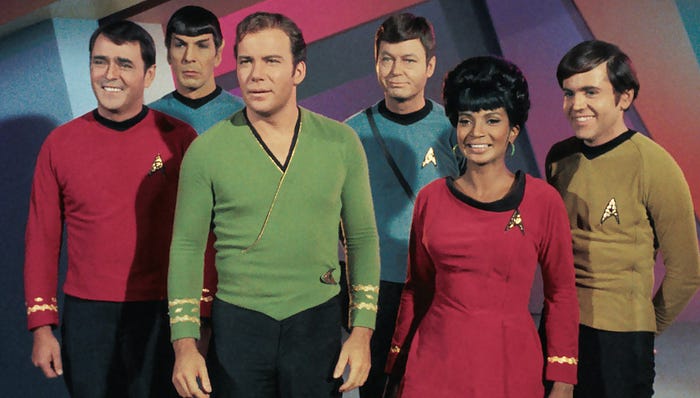Translated from original Portuguese version (here)

In years working with design and human interactions, I have had incredible experiences worthy of a movie script that I would love to share. However, some were so intense that it is hard to express with one medium article, so I decided to create this series of articles, where I will talk about how I learned with sci-fi in several aspects of design: forecasting new trends, ideation methodologies, understanding expectations of users and the impact of new paradigms.
This article is not only about Sci-fi or fiction, but also about using cultural contexts to extract precious information about culture and behavior.
Once upon a time…
When I was a kid, movies, cartoons and books made me want to be a crazy scientist who created inventions to help friends and family in simple and complex tasks. I wanted to pursue a scientific career such as physics or astronomy.
Then I became an Astronau…. oh wait… Designer?

Yeah, I ended up becoming a service and interaction designer, and that’s okay! Because I still see myself as the same mad scientist I wanted to be as a child.
And I’ll explain why …
Every design starts with fiction
At least until a service or product is prototyped (actually created, in fact).
To explain this matter let us first bring some definitions:
Although it is a controversial subject that will not be treated in this article, the definition of fiction in wikipedia is:
Fiction is the classification for any story or setting that is imaginary — in other words, not based strictly on history or fact.
Science fiction (often shortened to SF, sci-fi or scifi) is a genre of speculative fiction, typically dealing with imaginative concepts such as futuristic scienceand technology, space travel, time travel, faster than light travel, parallel universes, and extraterrestrial life. Science fiction often explores the potential consequences of scientific and other innovations, and has been called a “literature of ideas.
When we talk about design, we can enter a multitude of definitions in the aspects for communication, design thinking, service design… but one of the definitions that I think that represents most the meaning is:
Design is Ideation of a product or service with the intention of improving the human experience respecting a specific challenge.”

Having the definitions made, it is simple to realize that they correlate through the experience of individuals. Many methodologies such as conceptual designs, future journeys, trends forecast, future mapping and speculative / critical design are used today by various designers, imagining possible or likely futures, behaviors, services and products. In this context, fiction can be a strong tool for gathering insights and information about the main target: the human being.
Sci-fi explores the full breadth of human knowledge.
“The story of science fiction is the history of humanity’s changing attitudes toward space and time … the history of our growing understanding of the universe and the position of our species in that universe.”
critics Robert Scholes and Erik S. Rabkin
Design & Sci-fi are like classmates

The two are visionary and showy, follow different but parallel paths. While the design focuses on user experience, functionality and viability, sci-fi focuses on creativity and abstraction. So, even though it is rich to gather insights from this genre, it must be remembered that they are narratives that do not always care about details that design cares about. It is possible to learn about usability or to identify new trends for example, but to be able to identify them, one must understand their context, the way in which they are represented and often even invent new scenarios to make them plausible.
Understanding influences and correlations
Design is always about people, and nothing like fiction, to teach us about them. We can analyze works such as books, animated series of cartoons to 3D animations, films and paintings, always looking at the portrait they bring us about society, its moment and its behavior to draw insights and inspirations.

1 ) Sci-fi is inspired by the current paradigm

In the twenties and thirties the world changed to an electric age. Buttons, levers and doorknobs went out of the industries and entered the day to day of the people. As a result, this happened to be found in Sci-fi as well. Another great influence was war. Many productions depicted dystopias and had command rooms that represented war rooms.

In films like Metropolis (1927) and TV series like Buck Rogers (1929), the communication was reinvented but still had influences of the current context like the television changes, the telephone and cinema.
2) It is also inspired by individual experiences
In 1986, Michael J. Ackerman studied death row corpses in the United States for the Visible Human Project project. The project consisted of freezing bodies by analyzing them in “slices” that were categorized into a software for medical research.

The images and software of this project were used in the film X-men (2010), the image was used to represent a scanning of visitors who arrived in a prison.

The same case of individual inspiration happened with the work of Damien Hirst, famous for exhibitions of dead animals “sliced” preserved that served as inspiration for the producer of the movie “The cell.”
In addition to being inspired by individuals, the sci-fi can also inspire people in personal projects.
The most famous inspirations are the inventions of Julio Verne, between his pages, hide scientific data, descriptions and, above all, a great love for the technological innovations and the progress of humanity.
Verne stunned the world with stories of gadgets and vehicles like the submarine, lunar modules, solar panels, newsreels, video conferencing, and the laser pistol that years later took shape out of fiction, just as years later would do Isaac Asimov.

We can see a more practical example of someone inspired by Sci-fi, when we discover Douglas Cardwell’s story. He worked on the drawing of sand tables, used for strategy of Generals in places of conflict. Everything changed in his career when he went to watch X-men with his son in 2000.

3 ) Sci-fi sets new expectations
Anyone who has watched an episode of the original TV series “Star Trek” will recognize the similarity between a cell phone (StarTac) and the program communicator, the device that the Starfleet crew uses to talk over long distances wirelessly. The first version of the phone had its flip from bottom to top, and before being finalized it was adjusted to look exactly like the communicators of the series.

Why does the Motorola StarTAC phone look like a ‘Star Trek’ communicator?
The answer is because the engineers who built wanted their own communicators, and this was the chance to get one! “
Science Fiction creates expectations of what services and products will look like, and if you want to create something that meets these expectations, you better start watching sci-fi a lot!
4 ) Generates discussions and enables new social contexts
Science fiction films can allow us to study familiar social, human, or psychological issues that when examined in unfamiliar contexts give clarity to various aspects. This is a theme that is on the table and has several examples in many works, but to exemplify I selected three:
Diversity in the workforce

If you watch the original Star Trek series now, you probably would not think twice about the cultural diversity of the team. However, the diversity was unprecedented at the time and included Lieutenant Uhuru (one black), Lieutenant Sulu (one Asian) and Ensign Chekov (one Russian). At this time, the Civil Rights Movement was in full swing, the United States was also in the midst of the Vietnam War and the Cold War.
Love Interactions with Artificial Intelligence

The subject “Machines are capable of loving?” Has been approached by various works of fiction. But when analyzed in the movie Her, one realizes that this question evolves into an even greater one: if machines can one day be more capable of loving more than the human beings who created them.
Enough theory, how do I put this in practice?
There are some practical ways in which sci-fi can be a tool for research, generation of insights, and strategic design:
Understanding expectations (and detecting trends)
Technology and behavior showed in bestsellers and blockbusters tend to set high expectations in the audience of how new products, services, and paradigms will be. Understanding this and deciding how much of these expectations we need to meet is crucial.
Interface Lessons
Sci-fi explores man’s interactions with technology and new services. It is possible to have very valuable insights with visual, gestural and voice interfaces, even their visual characteristics, form or behavior.
Speculative design
Through narrative techniques and methods to create fiction stories we can build future and future tools, contexts and needs. Free from moorings, we can think of the unthinkable and then challenge ourselves bringing conclusions to reality.
Creativity with responsibility
With so many utopias and dystopias presented by many authors it is evident that when we create stories we must understand the responsibility they carry and remind us that as designers we also have the same responsibility. Predicting the impact, influence and changes in the social context are designers duties that can not be ignored.
We designers solved problems, but what if we put it more on the agenda? Let’s use fiction to inspire us with ideas, stories and methods, but we’ll use it to know where we’re going. Let’s do our best to create responsible things by drawing to earth or to space.
In the next articles in the series each of these subjects will be covered in more detail. What would you like to know? Do you have any suggestions? Write me comments ❤
References and further reading:
Science Fiction and the Prediction of the Future
Science fiction has always challenged readers with depictions of the future. Can the genre actually provide glimpses of…
Speculative Everything
How to use design as a tool to create not only things but ideas, to speculate about possible futures.
Make It So — Rosenfeld Media
Many interaction and interface designers enjoy the interfaces seen in science-fiction films and television shows. Freed…
Science Fiction Prototyping: Designing the Future with Science Fiction
Science fiction is the playground of the imagination. If you are interested in science or fascinated with the future…
Science Fiction and Futurism: Their Terms and Ideas (Critical Explorations in Science Fiction and…
Science and science fiction have become inseparable–with common stories, interconnected thought experiments, and…
Articles
